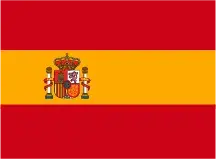It is estimated that the circular will be approved within a year and will be available for consultation in “approximately” two years.
What are the reasons for these preparation timelines?
Mainly due to the process necessary for energy companies to carry out the corresponding mapping.
This map responds to a demand from the sector that already has a long history.
The need to know the power of each location in order to plan their projects and investments more precisely is imminent, as until now eMobility projects had to be carried out without prior information.
This will prevent CPOs from encountering difficulties in managing power, as they do not receive the power they request due to a lack of capacity at a certain location.
In this regard, Carlos Ferraz, eMobility Director of PRIO, points out to Mobility Portal España: “Many times we have difficulties with power management, as we do not receive what we request and we must restart the process.”

It is important to highlight at this point that the map would help reduce the longest part of the process of enabling a charging point, which currently can take months or years, which is obtaining the requested energy.
In parallel, in Portugal, they not only have a distribution network operator that “owns almost 100 per cent of it” but also already have this public map.
The information in this is provided by E-REDES, which shows an approximation of the values related to the installed electrical network assets.
As well as the respective percentage of energy used extracted by the systems, referring to the moment of information collection.
“Therefore, management is simpler than in Spain,” he assures.

Similarly, Bastian Verot, co-General Manager of Electra, indicates that one of the main challenges in the national territory is obtaining the necessary power for charging points.
Currently, each installation requires a procedure with the distribution company, which can only be initiated once the installation is completed and approved by the inspection.
After obtaining the technical-economic letter, one must wait again to connect the infrastructure to the electrical network.
Therefore, the sector emphasizes that if the charging network does not grow faster, it is not due to a lack of effort by the operators, but rather due to the associated obstacles.
Verot also observes another challenge: “The power supply and the network in Spain are not as robust as they can be in other countries.”
It is expected that this will be solved with the European Union’s (EU) Action Plan for Electricity Networks.
This aims to address the main challenges in expanding, digitizing, and better utilizing the EU’s electricity transmission and distribution networks.
It will also allow for the updating of the network, as 40 per cent of European distribution networks are over 40 years old.
For this, an investment of around 575 billion euros is estimated by 2050.
“Spain is one of the first countries to have subsidies to accelerate in this area,” says Verot.
Both the modernization of the national grid and having a public power map will be ideal for meeting the objectives set out in the European Regulation on Alternative Fuels Infrastructure (AFIR).
Especially for electrifying one of the most polluting segments, which is heavy transport.
In this context, the Business Association for the Development and Promotion of Electric Mobility (AEDIVE) recently organized a meeting with professionals from the sector to continue the work of PIRVEP.
This Platform for Heavy Electric Vehicle Charging Infrastructure has two main objectives: to reduce the processing times and simplify them at a national level.
As well as achieving profitability in the mass deployment of high-power charging infrastructures.








